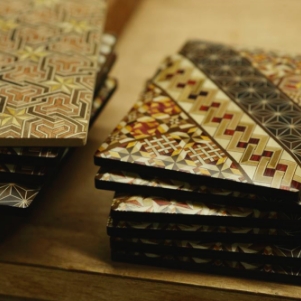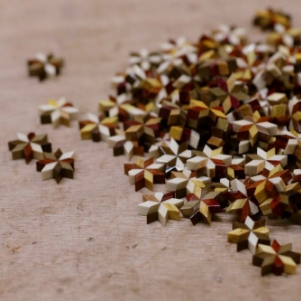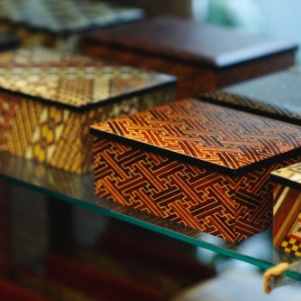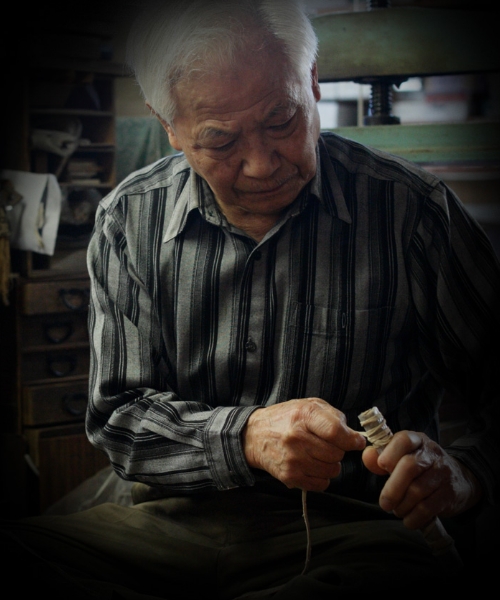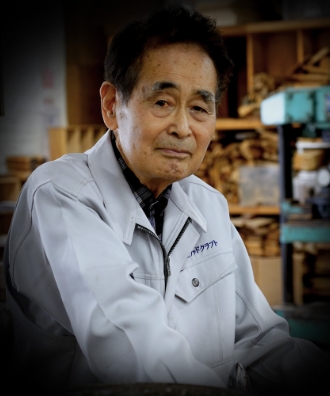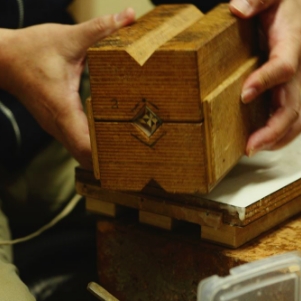
The Passion

Ichiro

ISHIKAWA Ichiro, the seventh generation
ISHIKAWA Ichiro is the seventh generation of the lineage of ISHIKAWA Nihei, who is said to be the founder of Hakone-Yosegi-Zaiku and is indispensable when talking about Hakone-Yosegi-Zaiku. He is also the owner of Hamamatsuya, which was established in the Hakone mountain village of Hatajuku by the fifth generation of ISHIKAWA Nihei, and above all, he is one of the traditional master craftsmen of Hakone-Yosegi-Zaiku.
Zuku-Bari is a technique in which thinly shaved patterns are applied outside of wooden products such as small boxes using a special plane. Muku-Zukuri is processing a thick patterned board by carving out a large block of created patterns to create the shape of a product.
Moku-Zogan is also produced here. This type of woodwork uses natural wood of different colors to inlay paintings and designs to create landscapes, figures, and other designs. Mr. Ichiro has produced a full range of techniques.
Ichiro and his younger brother, Yoshihiro, would create woodwork together. Unfortunately, Yoshihiro passed away, but his nephew is now continuing to make wood inlays, following in his footsteps. Yoshihiro was a master at wood inlays, and many of his works still remain in the store.
A finely honed craftsman's sensibility. "Skill and intuition"
Ichiro is mainly involved in pasting pieces for Zuku-Bari and Moku-Zogan. "The patterns, the choice of wood, the colors, the combinations... I make them all intuitively," he says. He selects various woods of different colors and grains intuitively and then glues them together in long pieces. The thin sticks of wood become more and more patterned by the combination. This is the base block of wood for the Yosegi-Zaiku.
The designed woodblock made of many smaller pieces is then planed and sliced into thin pieces. The thinness ranges from 0.15 mm to 0.2 mm. Since the wood is made from various woods of different hardness, if it is too thick or thin, it may fall apart or warp. The sheets are thinner than a piece of paper but are strong because they are sliced from bonded wood.
"It is an art created by cultivated techniques, intuition, and the sensitivity of the craftsman."
"That's why each expression of Yosegi is unique to the craftsman." says Ishikawa. There are traditional patterns, patterns that have been handed down from generation to generation, and patterns that are created by craftsmen based solely on their creativity and imagination. Together, the traditions of Hakone-Yosegi-Zaiku are steadily handed down from generation to generation. Of course, I make my tools. You make it if you don't have something you need to achieve your idealized design. It's very simple logic.

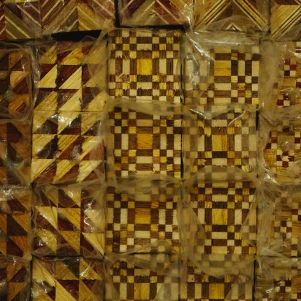
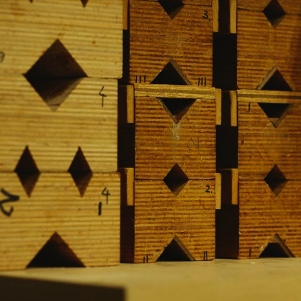
I never stop creating with my brother's legacy.
Another technique is wood inlay called Moku-Zogan. Moku-Zogan is different from Yosegi-Zaiku. The technique was developed by a wood inlay artist named SHIRAKAWA Senseki of Hakone-Yumoto, who used a jigsaw sawing machine to inlay the wood. The design is cut out on a board using a jigsaw sawing machine, and then sliced thinly to make a Zuku, a base plane, which is inlaid with wood of different colors and shades to make a design or image.
As mentioned above, this was the sole domain of his younger brother, Yoshihiro. Ichiro said, "In order to keep this technique alive, we need to keep making them here."
The training will continue until I can say "my original design."
"I have been continuing to give generous support to the Zouki-Bayashi, a group of young craftsmen, for the purpose of keeping the technique alive. They are not my rivals. That's why I want to pass on all the skills I have to them, and I also want them to be able to pass it on to the next generation as well. Since it is not a skill that can be learned in one or two years, it is a long process of training until I can say "my original design."
Even now, with his relentless spirit of inquiry and the fact that he himself is still in training, Ichiro has great expectations for the members of Zouki-Bayashi and hopes that they will continue to face the challenges of the future and keep this technique alive.
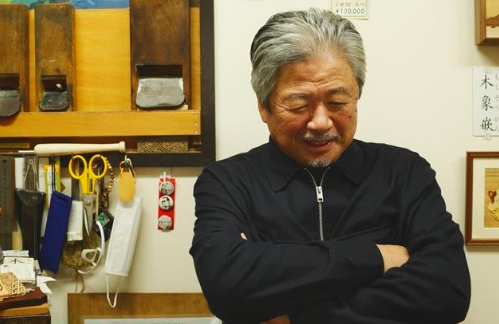
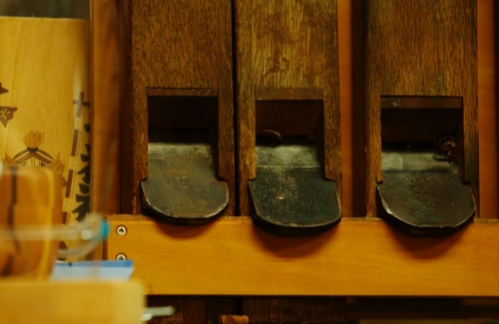
This is difficult to teach.
You use your fingers to cut the plane, and then after cutting, you use your fingers again to check. This process is often referred to as a craftsman's intuition because it is a difficult feeling to pass on. It can only be handed down by repeating the process over and over again. Since it is not something that can be handed down a day, it takes a number of years for both the person handing it down and the person asking for help. That's what traditional crafts are all about..."
MOVIE
